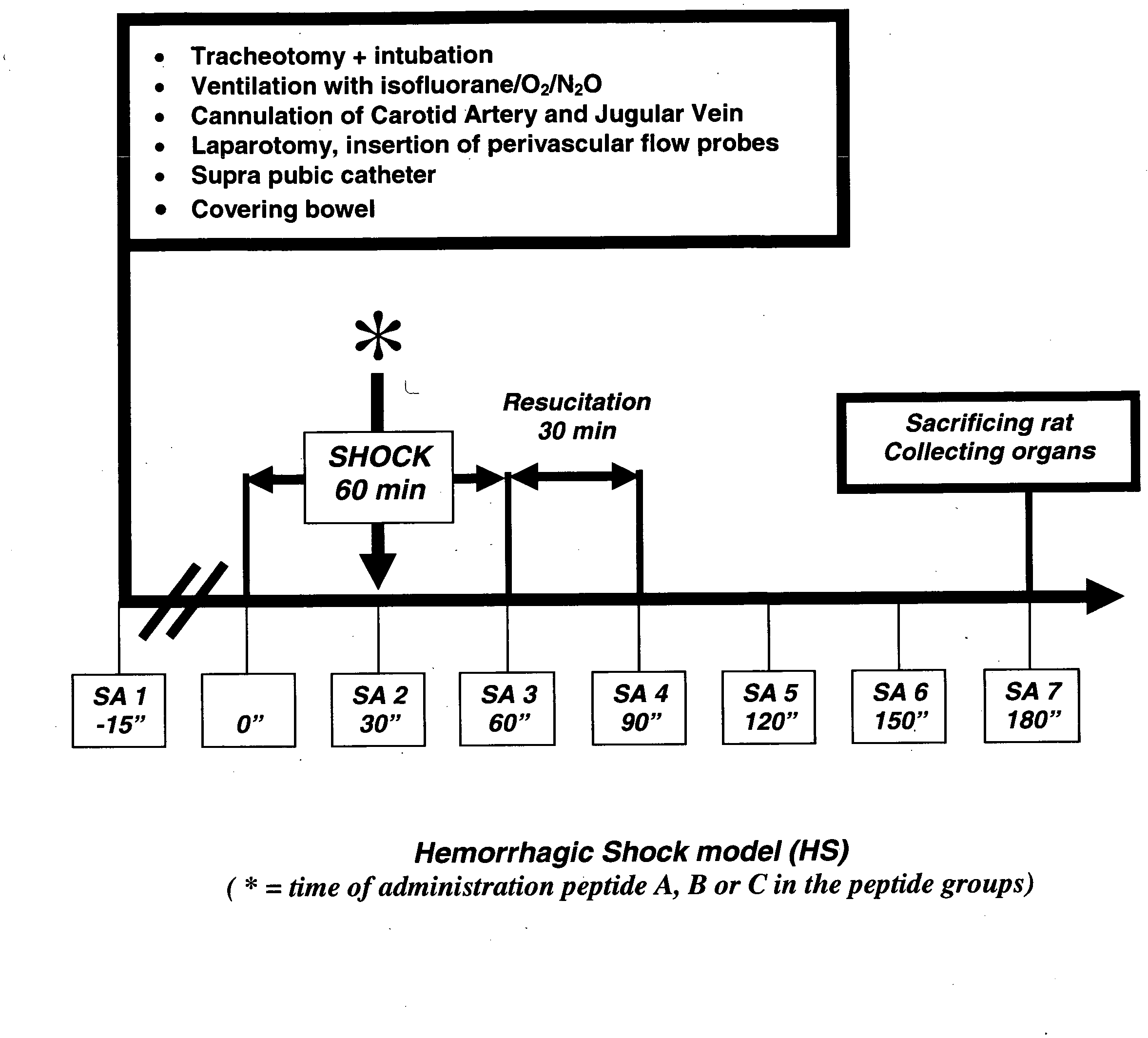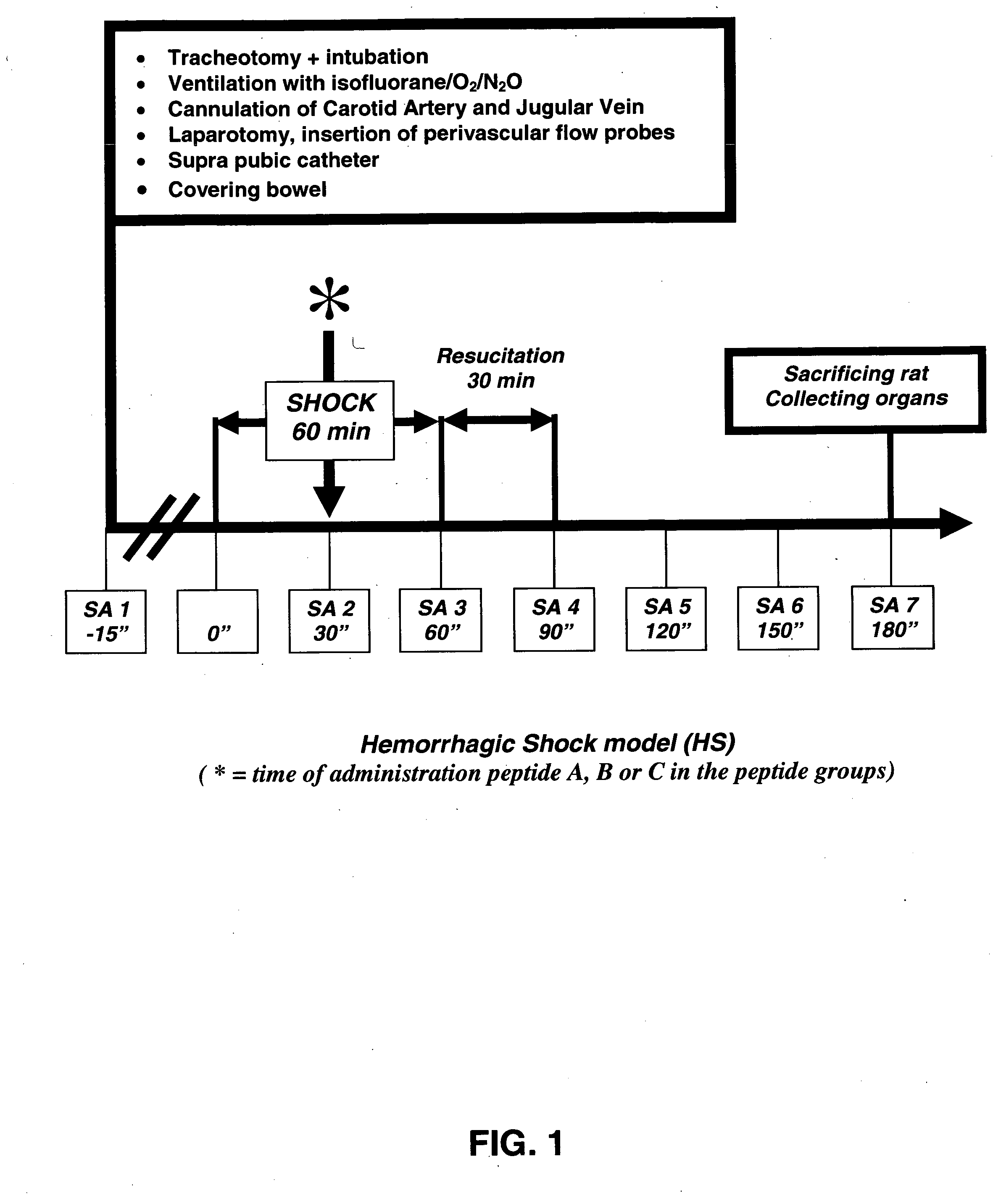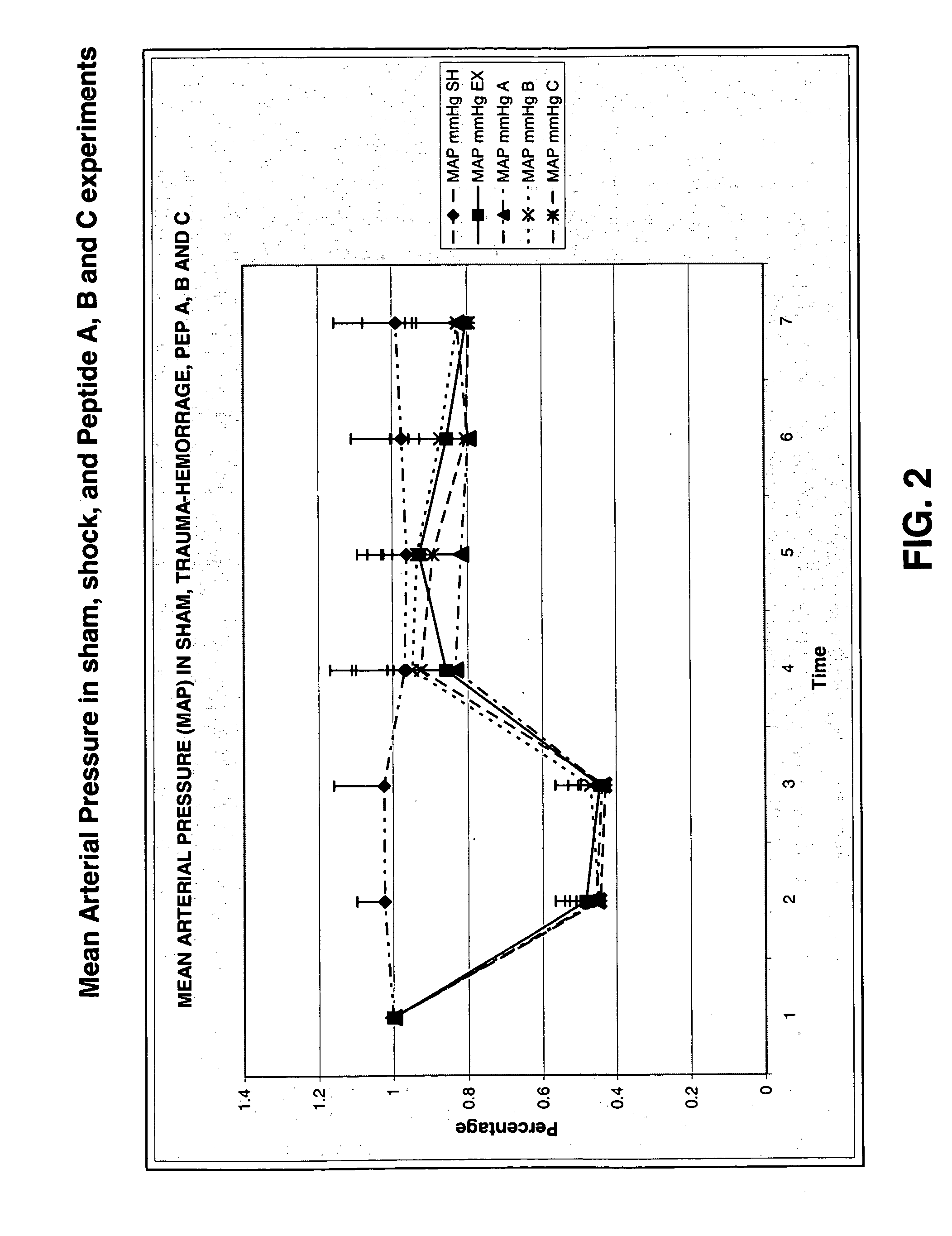Treatment of iatrogenic disease
a technology for iatrogenic disease and treatment, applied in the field of iatrogenic disease treatment, can solve the problems of mass blood loss, inability to compensate by the body, and almost impossible in a clinical trauma-hemorrhage setting
- Summary
- Abstract
- Description
- Claims
- Application Information
AI Technical Summary
Benefits of technology
Problems solved by technology
Method used
Image
Examples
example 2
Treatment of Severe Skin Inflammations Such as Seen Treatment with the Drug Imiquimod (ALDARA™)
[0142]To assess the activity of the various peptides with skin inflammations and tissue destruction seen, for example, with patients treated with the drug imiquimod (ALDARA™) an animal model was developed in which these inflammations are generated via topical application of the inflammatory agent to the skin of experimental mice. For this purpose mice were treated with 4% or 5% imiquimod. Imiquimod is an immune response modifier used in the treatment of skin cancers. It is manufactured as a 4% or 5% cream (ALDARA™). Imiquimod works by stimulating the immune system to release a number of chemicals called cytokines whereby it results in inflammation. The imiquimod is taken up by the so-called “toll-like receptor 7” on certain immune cells that are found in the outside part of the skin, the epidermis. Skin areas treated with imiquimod will become inflamed. The effects include itching, burning...
PUM
| Property | Measurement | Unit |
|---|---|---|
| concentration | aaaaa | aaaaa |
| concentrations | aaaaa | aaaaa |
| volume | aaaaa | aaaaa |
Abstract
Description
Claims
Application Information
 Login to View More
Login to View More - R&D
- Intellectual Property
- Life Sciences
- Materials
- Tech Scout
- Unparalleled Data Quality
- Higher Quality Content
- 60% Fewer Hallucinations
Browse by: Latest US Patents, China's latest patents, Technical Efficacy Thesaurus, Application Domain, Technology Topic, Popular Technical Reports.
© 2025 PatSnap. All rights reserved.Legal|Privacy policy|Modern Slavery Act Transparency Statement|Sitemap|About US| Contact US: help@patsnap.com



